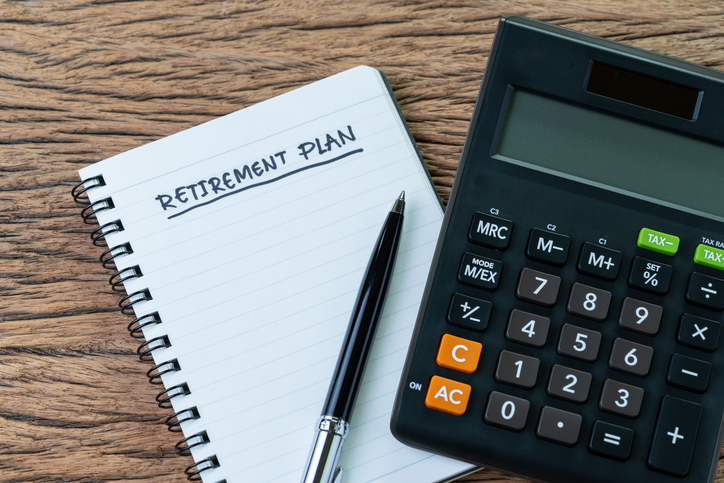Many people leave behind pension benefits when they change jobs, and claiming them later can feel complicated. Fortunately, with the right information and preparation, collecting your pension is usually straightforward. The process involves confirming your eligibility, tracking down your plan if it has changed hands and selecting the best payout option for your needs. Knowing your options and avoiding common mistakes can help you maximize your retirement income.
A financial advisor can also help you evaluate your choices and integrate your pension into a comprehensive retirement strategy.
Understand Your Pension Plan
The first step in learning how to collect a pension from a former employer is determining what type of plan you have. Most traditional pensions are defined benefit plans, which pay you a fixed amount monthly based on your salary history and years of service. Others may be cash balance plans, which combine features of a defined benefit plan and a 401(k).
You can start by reviewing your plan documents, which should outline your benefits, vesting schedule and payout options. If you no longer have the paperwork, contact the human resources or benefits department at your former employer to request a copy. Be sure to ask about your vested balance and the date you’re eligible to begin receiving benefits.
Locate Your Pension If You’ve Lost Track

If it has been many years since you worked for the company, you might not know where your pension is. Companies merge, close or transfer their plans to insurance companies, so it’s common for former employees to lose track.
If you’re unsure where your pension is now, start by searching through old tax records, pay stubs or emails for clues about the plan administrator. If the company no longer exists, the Pension Benefit Guaranty Corporation (PBGC)1, a federal agency, may have taken over your plan. You can search the PBGC’s online database for unclaimed pensions or contact them directly for help tracking down your benefits.
Verify Your Eligibility and Benefits
Once you’ve located your pension, confirm your eligibility to collect. You need to be vested, which typically requires a certain number of years of service, often between three and five. Your benefit amount depends on your earnings history, years of service, and the plan’s formula.
Be sure to understand how early retirement or delayed retirement affects your benefits. Starting your pension before your plan’s standard retirement age could result in a reduced benefit. Waiting to claim could increase it. You can ask the plan administrator to provide a benefit estimate based on different start dates so you can plan accordingly.
Choose Your Payout Option
When it’s time to start collecting, you’ll usually have to choose between several payout options. The most common choices are a lump sum or monthly payments.
A lump sum gives you the entire value of your pension at once, which you can roll over into an IRA to maintain tax-deferred growth. This option offers flexibility but requires discipline to manage the funds over your lifetime.
Monthly payments, on the other hand, provide a steady income stream for life. If you’re married, you’ll also need to choose between a single life annuity, which stops at your death, or a joint-and-survivor annuity, which continues paying your spouse after your death (albeit often at a reduced amount). Your choice can affect your taxes and long-term financial security, so weigh the pros and cons carefully.
When and How to Apply for Your Pension
You can typically start collecting your pension at the plan’s standard retirement age, often 65. Some plans allow you to begin earlier, usually with a reduced benefit.
To apply, contact your plan administrator several months before you wish to start receiving payments. They’ll provide you with an application form and a list of required documents. This usually includes proof of age, proof of identity and possibly a marriage certificate if you’re electing a survivor option.
Once you submit your application, it can take several weeks or months for payments to begin. With that in mind, start the process early.
Common Mistakes to Avoid
When figuring out how to collect a pension from a former employer, there are a few pitfalls to watch out for. For example:
- Missing deadlines could delay or even reduce your benefits.
- Choosing a payout option without considering tax consequences or your spouse’s needs could result in an inadequate income later.
- Forgetting to update your beneficiaries after a major life event like divorce or remarriage could potentially leave benefits to the wrong person.
Bottom Line

To collect a pension from a former employer, start by identifying the type of plan you have and confirming that you’re vested in your benefits. Contact the plan administrator or human resources department to get details on your payout options, including monthly payments or a lump sum. Gather any required paperwork, such as proof of employment and identification, and submit your application in advance of your planned start date. Reviewing your options with a financial advisor can help you choose a payout method that supports your long-term retirement goals.
Retirement Planning Tips
- A financial advisor can help evaluate your retirement plan to determine whether you have enough saved and recommend strategies to grow your nest egg. Finding a financial advisor doesn’t have to be hard. SmartAsset’s free tool matches you with vetted financial advisors who serve your area, and you can have a free introductory call with your advisor matches to decide which one you feel is right for you. If you’re ready to find an advisor who can help you achieve your financial goals, get started now.
- Mandatory distributions from a tax-deferred retirement account can complicate your post-retirement tax planning. Use SmartAsset’s RMD calculator to see how much your required minimum distributions will be.
Photo credit: ©iStock.com/BrianAJackson, ©iStock.com/Jacob Wackerhausen, ©iStock.com/Nuthawut Somsuk
Read the full article here









